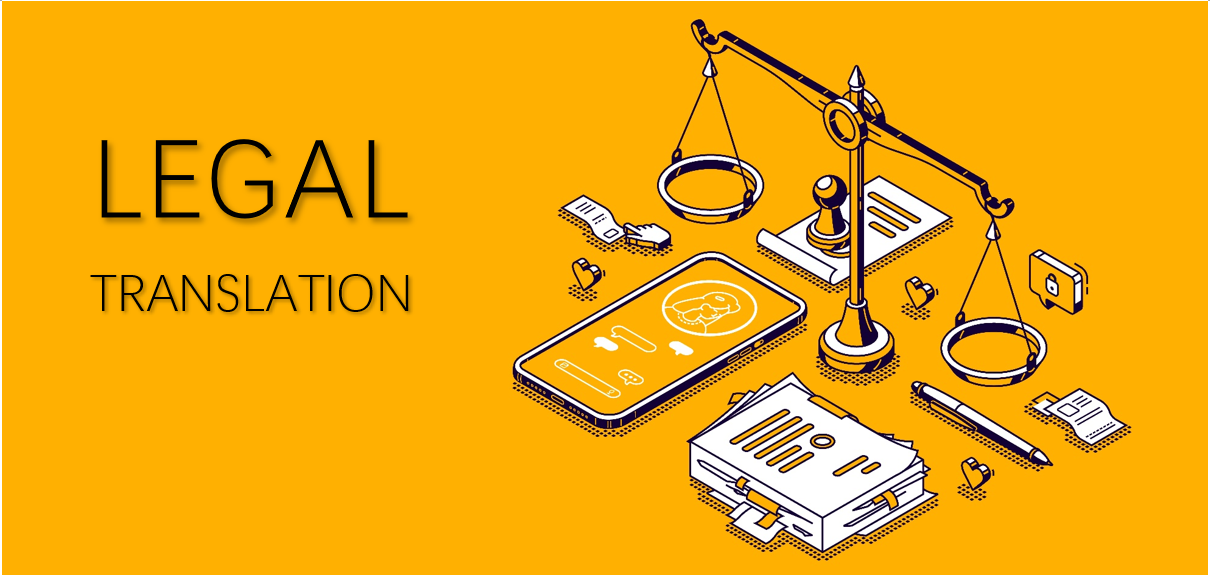Legal is an overarching field. Most relationships in society are governed by the law, from civil, commercial, labor, marital, familial to intellectual property or criminal relationships. However, like other specialties, legal documents have their own characteristics. To successfully implement a legal translation project, certain criteria are to be met, which are logic, accuracy, clarity and unambiguity.
Here are more details on 4 important features to keep in mind when translating legal documents
#1. Logical rigor is characteristic of legal documents
Logic in a text is understood as the linking between elements in a sentence, between sentences and between paragraphs. A translation should ensure that the logic of the original text is preserved. A basic cohesive device like “and/or” if changed can always cause the meaning of a sentence to be wrong.
For example, the most common legal documents are contracts, which set out the rights and obligations of each party. The relationship between “right-obligation”, “right-right” or “duty-obligation” is placed in a logical relationship. That party A has “right 1 and right 2” is different from party A having “right 1 or right 2” and also different from party A having “right 1 and/or right 2”.
Usually, in a legal document well written by someone experienced, the logical relationship will be evident. However, there are also cases where there are ambiguous cohesive devices, which means readers of the document cannot be sure what the exact relationship between the elements is. For example, when a comma is used to separate listing elements. “Right 1, right 2” may be understood as “right 1 and right 2” but can also be understood as “right 1 or right 2”. The comma itself does not just mean “and” or “or”. In such case, an experienced translator will use both “and” and “or”, that is, the phrase will be translated into “right 1 and/or right 2”. Narrowing the logical scope should be avoided at all costs. Because that means narrowing the rights/obligations of a party, which directly prejudices the rights and interests of the parties in the transaction.
Not only that, the translator should always pay attention to the logic in the entire text, between two adjacent sentences or two adjacent paragraphs. If a paragraph states that Party A is only entitled to right 1 or right 2, but the paragraph below it states that Party B is entitled to right 1 and 2, that means there is conflict. Are there any exceptions? If not, there is a good possibility that the document’s editor has made a mistake. In this case, the translator needs to give feedback to the client about the suspicion. Not only does this bring added value to clients, but it is also important to prevent the risk of avoidable errors.

#2. Accuracy in legal translations
Every legal translation needs to be accurate. Terms are important words/phrases that are used throughout a document and are often specified at the beginning of a document. They are usually capitalized/bold and used with clear definition within the text. Therefore, this is the first thing that needs to be translated correctly. The quality of a translation is first judged by the translation of terms. Does the translation use exact technical terms or is it merely translated literally? In the writer’s experience, there are 3 ways to ensure terminological accuracy:
- Consulting with experts. Expert consultation is always the number one step that AM Vietnam applies to important documents. As experts are those who have extensive expertise and knowledge in a given industry. In the case of legal documents, the experts that AM Vietnam trusts are lawyers with many years of experience in the profession.
- Looking up terms in legal documents. Terms specified in legal documents always has high reliability, as they have been carefully selected by legislators. However, one drawback of this method is that not all terms are specified in these documents.
- Consulting with clients. Clients may not be a source of reference that everyone thinks of, because people may think because clients cannot translate themselves, so they have to call in translation services. In reality, clients may know technical terms that they are familiar with, which can sometimes take a translator all day to look up. Moreover, if a clients has available glossaries, we can also use terms exactly as required by the client.
Terminological accuracy in a translation also includes the consistent use of terms. The translator not only has to translate terms in a document accurately but also use the same translation throughout the document. Because many terms can be translated in more than one way. The important thing is to choose the best option and stick with it. Having many different translations for the same term in a document may confuse readers.
For example, if we talk about Standard 1 in the first part, but Criterion 1 later on, then is Standard 1 just Criterion 1? Or something else? Consistent translation not only needs to be strictly applied when translating legal documents but also is a general when translating any document.
#3. Clarity in the style of legal documents
In a legal document, there can be no ambiguous sentence. If the translator cannot understood the meaning of a sentence in the source document, he or she needs to consult with lawyers or at least informs the client of the unclear sentence.
It will be very risky if the translator chooses to translate a sentence without fully understanding it Doing so may lead to mistranslation. In addition, there are also factors that the translator should pay attention to ensure the correct meaning of the sentence:
- Using clear language, avoid using slangs and dialects
- Reading through the translation to ensure a natural and fluent structure.
- Making sure foreign sentence elements have been addressed (For example: inversion structure, passive voice, subject omission, etc.)
- Marking up difficult, unclear sentences for review and then informing the client
#4. Unambiguity in legal translations
The unambiguity mentioned here is the fact that one sentence cannot be understood with more than one meaning. Each sentence can only be understood with one meaning. This is also the principle in drafting legal documents. The appearance of ambiguous sentences often leads to certain legal risks. When the translator encounters this, it is very important to re-study the original document and he or she may need the advice of a legal expert. The client should also be informed of this.






